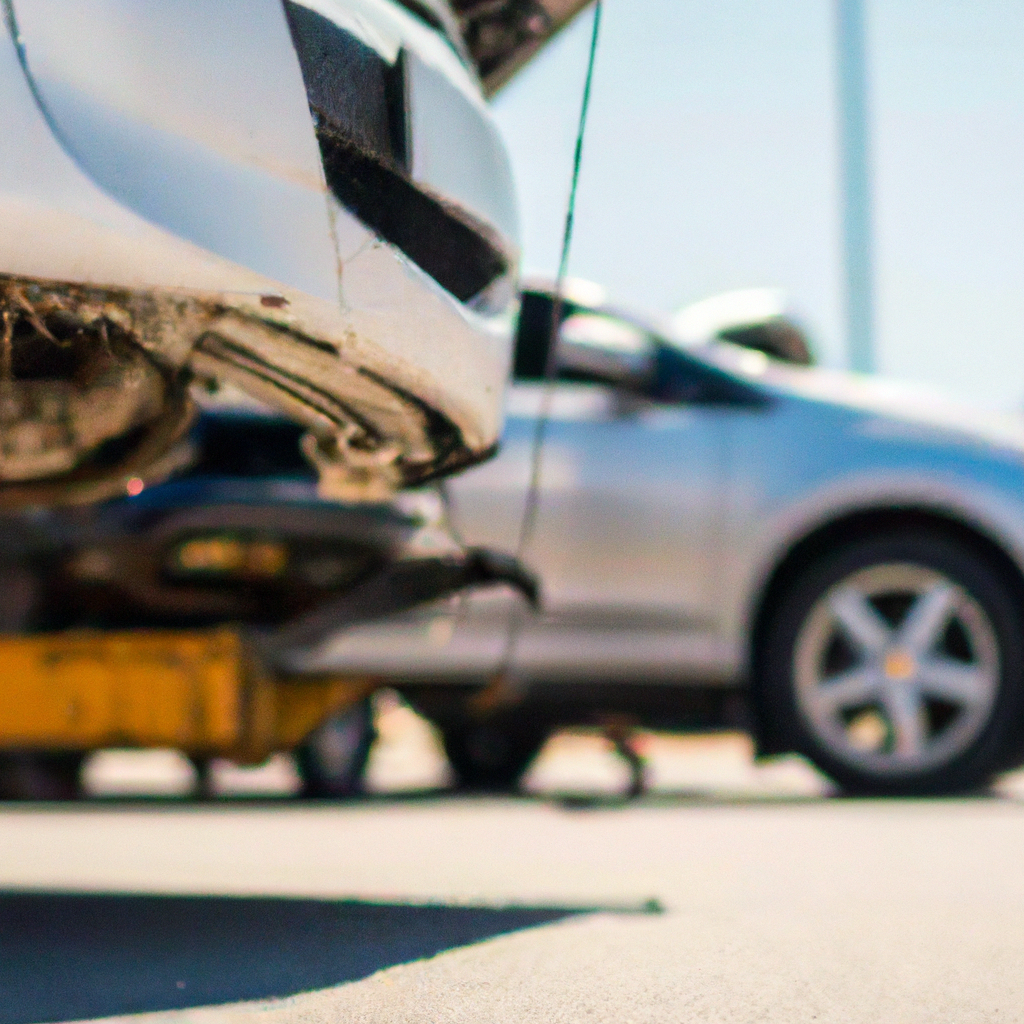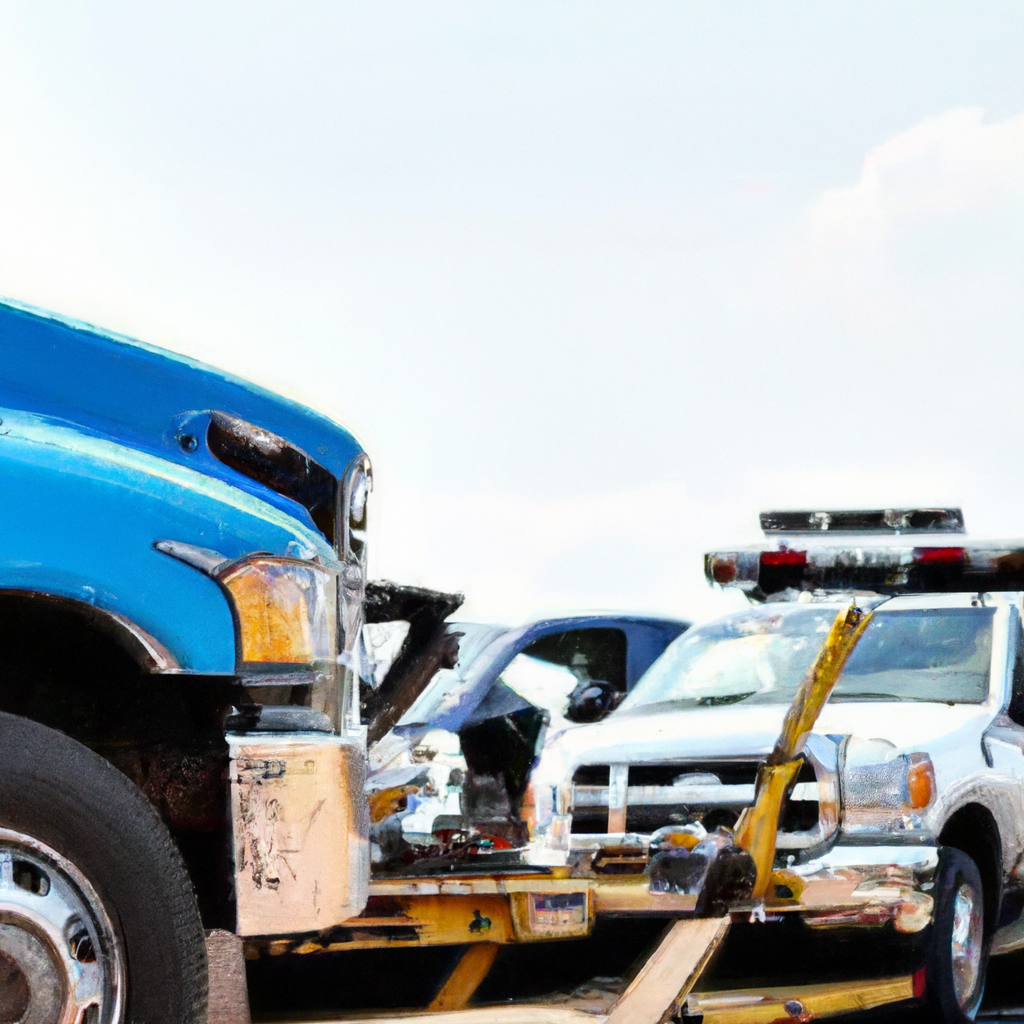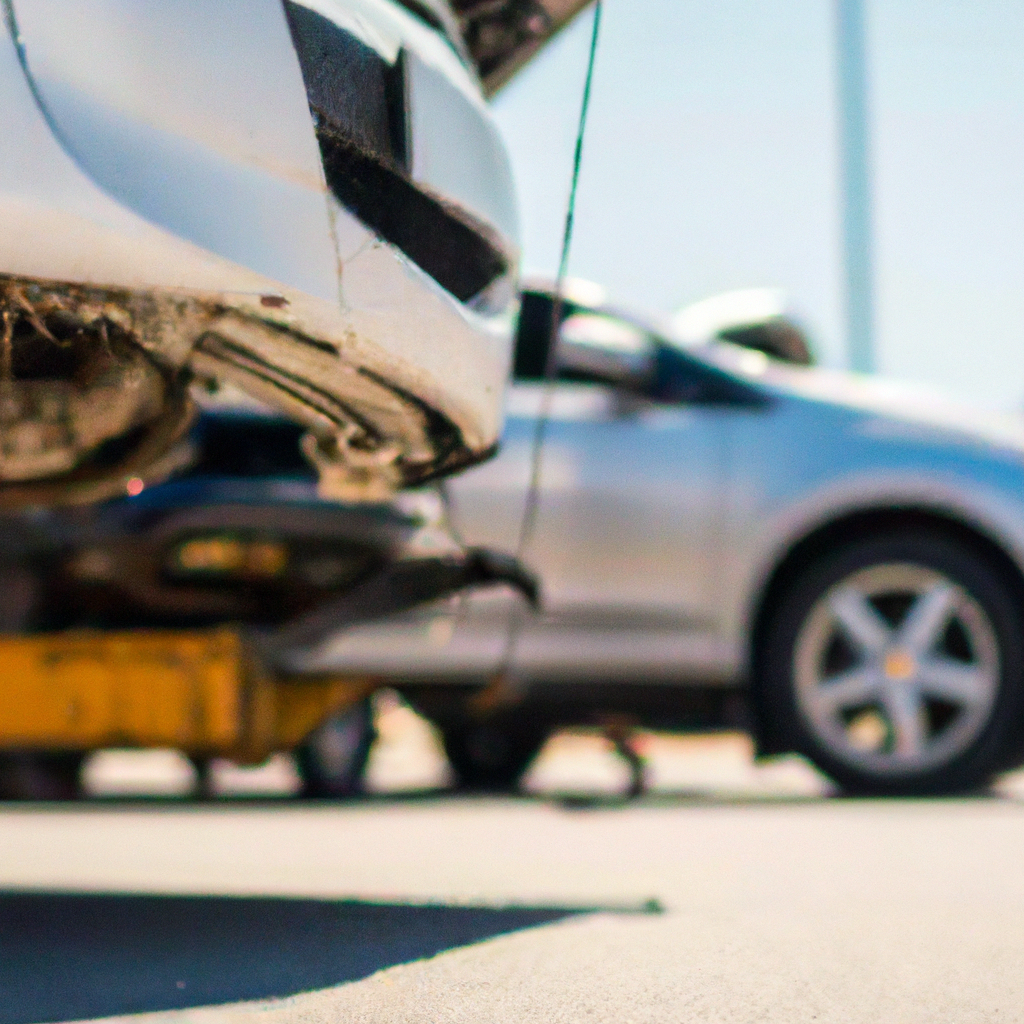In the realm of automotive mysteries, a perplexing question persists: why does towing have the uncanny ability to wreak havoc on a vehicle’s transmission? This enigma has left countless vehicle owners scratching their heads in frustration, as the damage caused by towing becomes an all too common occurrence. Delving into the intricacies of this mechanical quandary, this article aims to shed light on the underlying reasons behind the disastrous consequences that towing can have on your transmission. Brace yourself for a journey into the complex world of vehicular mechanics, where towing emerges as a formidable threat to the longevity and functionality of that vital component known as the transmission.
1. Weight Overload
1.1. Understanding Towing Capacity
When it comes to towing, understanding the towing capacity of your vehicle is crucial. Towing capacity is the maximum weight that your vehicle can safely tow without causing damage to its transmission or other critical components. Exceeding this limit puts excessive strain on the transmission, leading to potential problems such as overheating and premature wear and tear. It is important to consult your vehicle’s manual or contact the manufacturer to determine the specific towing capacity for your vehicle. By adhering to these guidelines, you can ensure that you do not overload your transmission and avoid potential damage.
1.2. Transmission Overheating
One of the major risks of towing is transmission overheating. When you tow heavy loads, especially in high temperatures or demanding conditions, the transmission has to work harder to maintain the necessary power and torque. This increased workload generates heat, and if the transmission is not equipped with adequate cooling mechanisms, it can lead to overheating. Overheating can cause extensive damage to the transmission, including the breakdown of critical components and fluid degradation. Regularly monitoring the transmission temperature and ensuring it stays within acceptable limits is crucial to prevent overheating and subsequent damage.
1.3. Excessive Wear and Tear
Towing heavy loads places a significant amount of stress on the transmission and its internal components. The additional weight can cause the transmission to work harder, resulting in increased friction and wear on various parts. Over time, this wear and tear can lead to the deterioration of crucial components such as gears, clutches, and bearings. The continuous strain placed on these parts can cause them to fail prematurely, resulting in costly repairs or even the need for a complete transmission replacement. Proper maintenance, including regular inspections and servicing, is essential to identify and address any signs of wear and tear before they escalate into a full-blown transmission failure.
2. Inadequate Lubrication
2.1. Fluid Level and Quality
Proper lubrication is vital for the smooth operation of the transmission, especially when towing heavy loads. Inadequate fluid levels or poor-quality transmission fluid can significantly impact the performance and longevity of the transmission. Insufficient fluid levels can lead to inadequate lubrication, causing increased friction and heat generation. On the other hand, using low-quality or degraded fluid can lead to insufficient lubrication properties, reduced cooling capacity, and accelerated wear on internal components. Regularly checking the fluid level and quality, as well as adhering to manufacturer-recommended fluid change intervals, is crucial to ensure optimal lubrication and prevent potential transmission damage.
2.2. Lack of Transmission Cooler
A transmission cooler plays a vital role in maintaining the optimal operating temperature of the transmission. When towing heavy loads, the transmission generates more heat than usual, and without a transmission cooler, this heat can build up quickly and cause damage. The transmission cooler helps dissipate the excess heat, preventing overheating and ensuring the transmission operates within safe temperature ranges. Installing an adequate transmission cooler, especially if you frequently tow heavy loads or live in a climate with high ambient temperatures, is essential to protect your transmission from heat-related damage.
2.3. Insufficient Cooling System
The performance of the cooling system directly affects the transmission’s ability to stay within safe temperature limits while towing. If the cooling system, including the radiator and coolant, is not functioning properly, the transmission may not receive adequate cooling. Insufficient cooling can lead to increased temperatures, even if a transmission cooler is present, and cause damage to the transmission over time. Regularly inspecting and maintaining the cooling system, including checking coolant levels, flushing the system, and addressing any issues promptly, is crucial to ensure proper cooling and prevent overheating.

This image is property of pixabay.com.
3. Improper Towing Techniques
3.1. Speeding and Sudden Braking
When towing heavy loads, it is important to adjust your driving style to accommodate the increased weight and altered handling characteristics of the vehicle. Speeding while towing can put excessive strain on the transmission, as well as the brakes, suspension, and other components. Additionally, sudden braking while towing can cause abrupt shifts in weight distribution, further stressing the transmission. It is recommended to drive within the speed limits specified for towing and to maintain a safe following distance to allow for adequate braking without putting unnecessary strain on the transmission.
3.2. Shifting Gears Incorrectly
Proper gear shifting is essential when towing heavy loads to minimize stress on the transmission. Downshifting too quickly or abruptly can cause the transmission to over-rev, creating additional strain on internal components. Similarly, upshifting at too low of a speed can bog down the engine, forcing the transmission to work harder than necessary. It is important to familiarize yourself with your vehicle’s recommended gear shifting guidelines while towing, and to shift smoothly and progressively to avoid unnecessary stress on the transmission.
3.3. Overworking the Transmission
Towing heavy loads for extended periods without breaks can overwork the transmission, leading to potential damage and premature wear. Continuous strain on the transmission can result in increased heat generation, fluid degradation, and accelerated wear of internal components. It is important to give your transmission periodic breaks during long towing trips to allow it to cool down and alleviate the strain. Additionally, avoiding excessive acceleration or driving at high RPMs for prolonged periods can help prevent excessive stress on the transmission.
4. Incompatibility Between Vehicles
4.1. Mismatched Towing Capacity
Using a vehicle that is not designed to tow the weight of the load can have severe consequences for the transmission. Mismatched towing capacities can lead to excessive strain on the transmission, resulting in overheating, accelerated wear, and potential failure. It is crucial to ensure that the towing capacity of your vehicle matches or exceeds the weight of the load you intend to tow. Using a vehicle with a lower towing capacity than required can cause irreparable damage to the transmission and other critical components.
4.2. Transmission Type and Torque
The type of transmission and its torque capacity play a significant role in towing safely. Automatic and manual transmissions have different torque handling capabilities, and using the wrong type of transmission for heavy towing can lead to problems. Automatic transmissions are generally better suited for towing due to their ability to handle higher torque loads. Using a manual transmission that is not rated for heavy towing can result in premature wear and failure of components such as clutch plates. It is essential to use a transmission that is specifically designed and rated for towing heavy loads to ensure its longevity and performance.
4.3. Suspension and Weight Distribution
The suspension system and proper weight distribution also play a crucial role in towing safely. Insufficient suspension capabilities, including shocks and springs, can cause the vehicle to sag under the weight of the load, placing extra stress on the transmission and other components. Uneven weight distribution can further exacerbate this issue. It is important to ensure that the vehicle’s suspension is in good working condition and that the weight of the load is distributed evenly across the vehicle and trailer. Proper weight distribution and suspension functionality help reduce strain on the transmission and maintain stability while towing.

5. Neglecting Maintenance
5.1. Regular Transmission Servicing
Regular transmission servicing is paramount in preventing damage and ensuring optimal performance, especially when towing heavy loads. Neglecting transmission maintenance, such as fluid changes and filter replacements, can lead to degraded fluid quality, inadequate lubrication, and increased friction. It is essential to follow the manufacturer’s recommended maintenance schedule for your specific vehicle and driving conditions. Regular servicing helps identify and address potential issues before they escalate, preserving the functionality and longevity of the transmission.
5.2. Checking Fluid Levels and Quality
Monitoring transmission fluid levels and maintaining its quality is crucial when towing heavy loads. Inadequate fluid levels can impair lubrication and cooling properties, while degraded or contaminated fluid can cause additional wear on internal components. Regularly checking the fluid level, as well as its color, smell, and consistency, can help detect any potential issues. If any abnormalities are found, it is important to address them promptly by changing the fluid and investigating the underlying cause.
5.3. Inspecting Transmission Cooler
The transmission cooler, responsible for dissipating excess heat, should be inspected regularly to ensure its proper functioning. A damaged or clogged transmission cooler can impede heat dissipation, leading to overheating and potential transmission damage. Regular inspection of the cooler, including checking for leaks or blockages, is crucial to identify and address any issues promptly. Additionally, ensuring that the cooler is properly installed and connected to the transmission is essential to prevent heat-related damage while towing.
6. Age and Wear of the Transmission
6.1. Deterioration of Components
As a transmission ages, its components naturally undergo wear and tear, which can impact its ability to handle the stress of towing heavy loads. Gears, bearings, clutches, and other internal parts may become worn, leading to reduced performance and potential failure. Regular inspections and maintenance can help identify any signs of component deterioration. Addressing these issues promptly, such as through component replacements or rebuilding the transmission, can extend its lifespan and ensure it can handle the demands of towing.
6.2. Weaknesses in Old Transmissions
Older transmissions may have inherent weaknesses that make them more susceptible to damage when towing heavy loads. Technological advancements and design improvements over the years have led to stronger and more durable transmissions. If your vehicle has an older transmission, it is important to be aware of any known weaknesses and take appropriate precautions when towing. Consulting with a professional and considering upgrading to a more robust transmission may be necessary to avoid potential damage.
6.3. Preexisting Damage or Defects
Preexisting damage or defects in the transmission can be exacerbated when towing heavy loads. If the transmission has already experienced damage or has underlying issues, the additional stress of towing can lead to further deterioration and potential failure. Regular inspections and diagnostics can help identify any preexisting damage or defects. Addressing these issues before towing heavy loads is crucial to prevent further damage and maintain the transmission’s functionality.

7. Driving Conditions and Terrain
7.1. Uphill Gradient and Downhill Braking
Driving conditions and terrain can significantly impact the stress placed on the transmission when towing. Uphill gradients require the transmission to work harder to maintain power and torque, generating more heat and placing increased strain on internal components. Downhill braking, especially when towing heavy loads, can cause the transmission to downshift and act as a brake, resulting in increased wear on gears and clutch plates. It is important to be mindful of these driving conditions and adjust your speed and gear selection accordingly to minimize stress on the transmission.
7.2. Rough and Uneven Paths
Towing heavy loads on rough or uneven paths can exacerbate the strain on the transmission. Bumpy roads or off-road conditions can cause excessive jolts and vibrations, leading to increased wear and potential damage to the transmission. It is essential to assess the condition of the road or path before towing and take precautions such as reducing speed or choosing alternative routes to minimize stress on the transmission.
7.3. Off-Roading and Overloading
Engaging in off-roading activities or exceeding the maximum weight capacity while towing can have detrimental effects on the transmission. Off-roading exposes the transmission to extreme conditions such as deep mud, steep slopes, and uneven terrain, which can lead to increased stress and potential damage. Additionally, overloading the vehicle beyond its capacity places excessive strain on the transmission, jeopardizing its longevity and performance. It is crucial to adhere to the manufacturer’s guidelines regarding off-roading and maximum towing limits to protect the transmission from unnecessary stress and prevent costly repairs.
8. Ignoring Manufacturer Guidelines
8.1. Ignorance of Towing Capacities
Failing to adhere to the manufacturer’s guidelines concerning towing capacities can have severe consequences for the transmission. Ignorance of the specified towing capacity and attempting to tow loads beyond what the vehicle is designed for can result in significant damage to the transmission. It is crucial to familiarize yourself with the towing capacities outlined by the manufacturer and ensure that you do not exceed them. Doing so will help protect the transmission from avoidable strain and potential failure.
8.2. Disregarding Transmission Recommendations
Manufacturers often provide specific recommendations and guidelines for towing with their vehicles. Disregarding these recommendations, such as using an incompatible trailer hitch or trailer weight distribution system, can lead to improper towing and increased stress on the transmission. It is important to follow the manufacturer’s recommendations for towing equipment and accessories, as they are designed to work harmoniously with the vehicle and transmission. Ignoring these recommendations may compromise the safety and longevity of the transmission.
8.3. Failure to Install Necessary Equipment
Properly equipping your vehicle with necessary towing equipment is essential to ensure safe and reliable towing. Failing to install essential equipment such as a trailer hitch, weight distribution system, or trailer brakes can put excessive strain on the transmission and other components. These accessories are designed to distribute the weight properly and assist in braking, reducing the stress on the transmission. It is crucial to install the recommended equipment and ensure it is in good working condition before embarking on any towing activities.
9. Transmission Design and Quality
9.1. Durability and Strength
The design and quality of the transmission itself play a crucial role in determining its ability to withstand the stress of towing heavy loads. Transmissions built with durable materials and construction techniques are more likely to withstand the increased torque and heat generated during towing. Higher-quality transmissions generally offer better durability and longevity when subjected to heavy towing. It is important to consider the transmission’s design and quality when selecting a vehicle for towing purposes to ensure it can handle the demands without suffering damage.
9.2. Heat Dissipation Capability
The transmission’s ability to dissipate heat is vital in maintaining optimal performance and preventing damage during towing. Transmissions equipped with efficient cooling mechanisms, such as transmission coolers and larger fluid capacities, have a higher heat dissipation capability. These features help regulate the transmission’s temperature and prevent overheating. When selecting a vehicle for towing, it is important to consider the transmission’s heat dissipation capability to ensure it can handle the additional heat generated under towing conditions.
9.3. Fragility and Vulnerabilities
Some transmissions may have inherent fragilities or vulnerabilities that make them more prone to damage while towing. Design flaws, substandard components, or limited torque handling capabilities can lead to premature wear and potential failure when subjected to heavy towing. It is important to research and consider the reputation and reliability of the transmission model in the context of towing to ensure its suitability for the intended towing purposes. Consulting with experts and professionals can provide valuable insights into the transmission’s vulnerabilities and help make an informed decision.
10. Repetitive Stress and Abuse
10.1. Frequent Towing without Breaks
Repetitively towing heavy loads without allowing the transmission to rest and cool down can lead to cumulative stress and can increase the risk of damage. Continuous strain on the transmission without breaks prevents it from adequately dissipating heat and can lead to overheating and premature wear. It is advisable to schedule breaks during long towing trips to allow the transmission to cool down, reducing the risk of damage due to excessive stress and heat build-up.
10.2. Exceeding Maximum Towing Limits
Exceeding the maximum towing limits specified by the manufacturer is a common cause of transmission damage. Pushing the capacity of the transmission beyond what it is designed to handle places excessive stress on its components, leading to accelerated wear and potential failure. It is crucial to respect and adhere to the maximum towing limits specified by the manufacturer to avoid potential damage to the transmission and ensure safe towing practices.
10.3. Rough Handling and Misuse
Rough handling and misuse of the transmission while towing, such as aggressive shifting, abrupt acceleration, or improper gear selection, can lead to excessive stress and potential damage. It is important to drive with care and be mindful of the additional weight and altered handling characteristics while towing. Maintaining smooth acceleration and deceleration, avoiding harsh gear shifts, and using the appropriate gear ratios for the load can help minimize stress on the transmission and prolong its lifespan.
In conclusion, towing heavy loads can have significant impacts on the transmission if not approached with proper care and consideration. Understanding the factors that contribute to transmission damage during towing, such as weight overload, inadequate lubrication, improper towing techniques, vehicle incompatibility, neglecting maintenance, age and wear of the transmission, driving conditions, ignoring manufacturer guidelines, transmission design and quality, as well as repetitive stress and abuse, is essential to prevent costly repairs and ensure the longevity of the transmission. Practicing safe towing practices, regular maintenance, and adhering to manufacturer recommendations can help mitigate the risks associated with towing and safeguard the transmission from unnecessary strain and potential failure.
